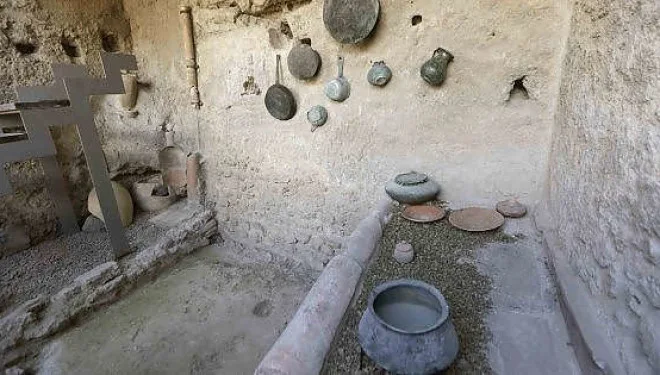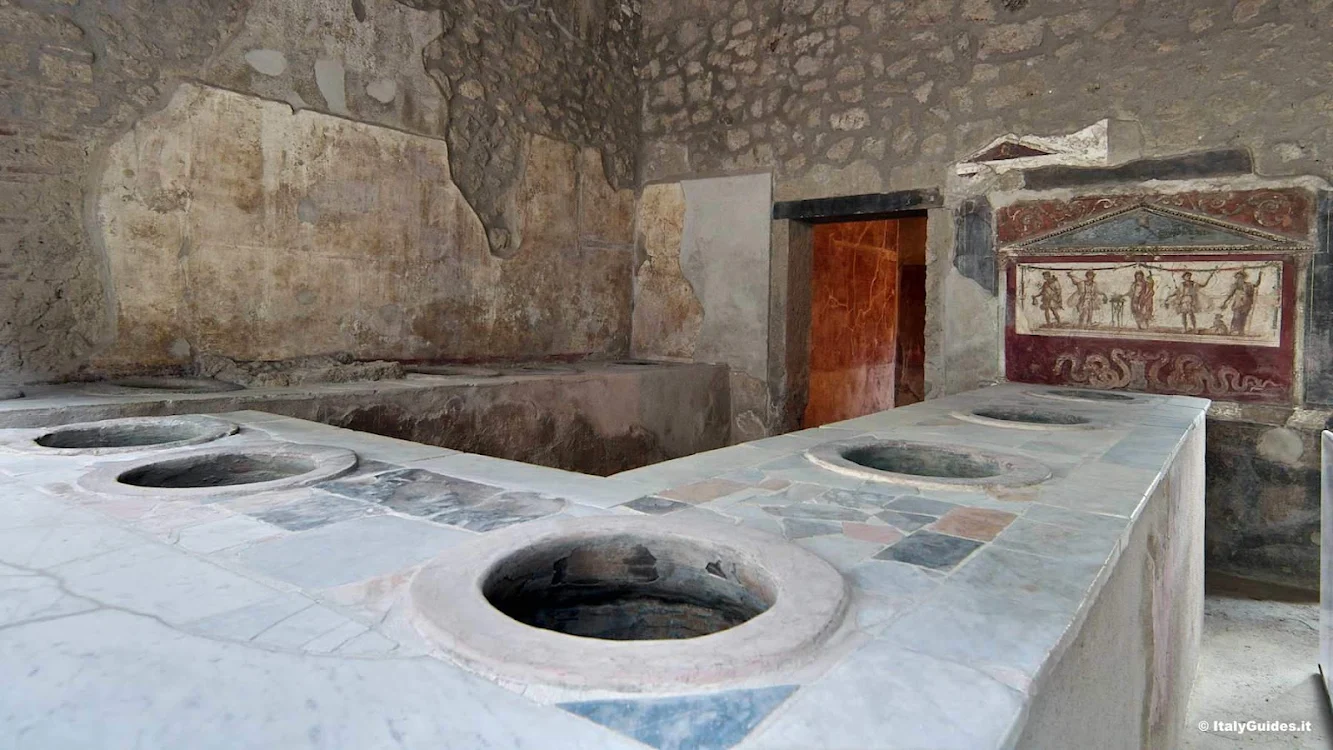The ancient Roman kitchens of a Pompeii launderette have once again been kitted out with pots and pans as part of a new project that is trying to give visitors a sense of what day-to-day life in the city was like.

Before they were buried by a volcanic eruption in AD 79, the kitchens once provided food for the hungry attendants of the three-storey launderette, the Fullonica di Stephanus.
The Fullonica was the place where wealthy Roman patricians sent their togas to be washed in huge baths using clay and urine. The garments were then rinsed, dried and placed on special presses to ensure they returned to their noble owners crease-free.
Thanks to a refurbishment which finished on Monday, the kitchens inside the Fullonica now appear as they did 2,000 years ago, complete with metal grills, pots, pans and earthenware crockery.

The new installment provides an interesting window on Roman cooking practices.
Instead of using gas or electric hobs, the Romans cooked their food over specially-made troughs, in which beds of flaming charcoal were placed.
Hunks of meat, fish and vegetables were then laid on grills directly over the coals, while soups and stews simmered away in pots and pans that were stood on special tripods to elevate them above the scorching embers.
All of the cooking equipment now on display was found in and around the kitchens when they were first excavated in 1912 by the then Superintendent of Pompeii, Vittorio Spinazzola.

Spinazzola initially left all the items in the kitchen, but his predecessors packed them away in storage or placed them in glass display cabinets in different areas of the site.
“We're delighted the pieces have finally been put back on display where they were found and we're certain they will be appreciated by modern tourists, eager to learn how people lived in antiquity,” said Massimo Osanna, the current Archaeological Superintendent of Pompeii.
As part of the same initiative, further examples of ancient Roman culinary practices were also given permanent exhibition at the city gym, the Pallestra Grande, on Monday.
Visitors can now marvel at a carbonized loaf of two-millennia-old bread and admire a metal pot containing the fossilized remnants of a bean and vegetable soup.
Source: The Local [August 03, 2016]